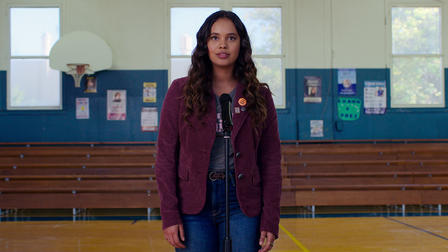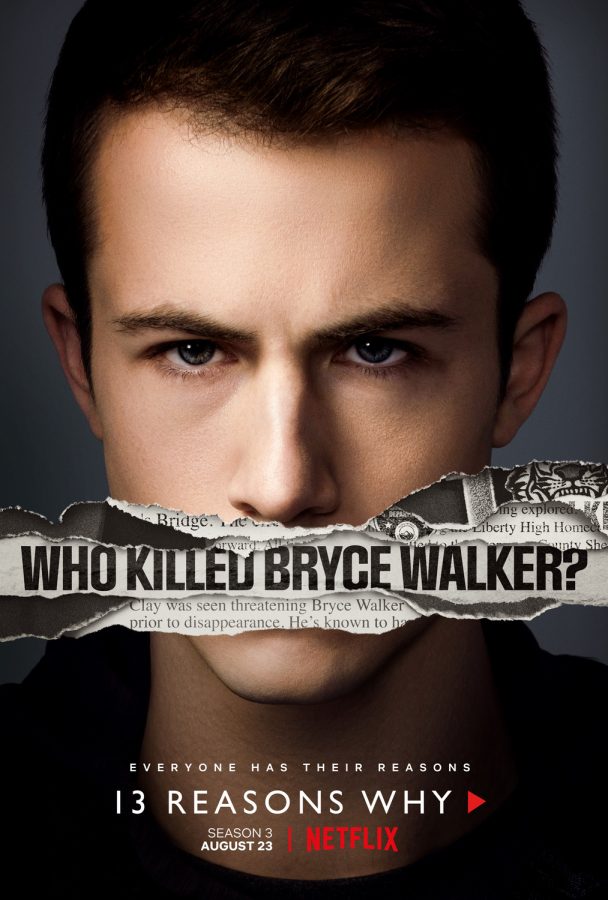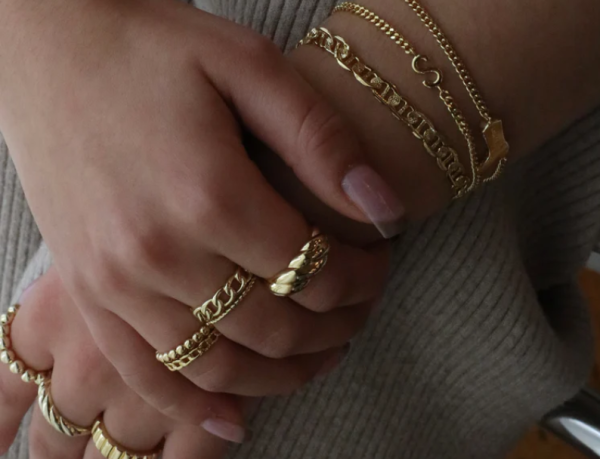Confusion and controversy fail to sink 13 Reasons Why
Season three was advertised using posters with the faces of various characters, such as this one displaying a stoic Clay Jensen (Dylan Minnette).
September 5, 2019
Who killed Bryce Walker? In the past few months, this question has been circling through social media, across Instagram ads and Twitter feeds, peaking the interest of fans. Finally, on Aug. 23, season three of the controversial original series “13 Reasons Why” hit Netflix, providing the highly anticipated answer to this question.
Personally, I have never been the biggest fan of the show and I was not dying to immediately have the question answered. Seasons one and two being overly dramatic and unrealistic put a damper on my enthusiasm for the newest installments. However, season three was a pleasant surprise; despite a confusing timeline and a distracting number of social issues, the series manages to craft a compelling and worthwhile story.
For me, the most detracting aspect of the series was the constant jumping back and forth and back again through time. What is “currently” happening starts the week after Liberty High School’s Homecoming game, where an important but unknown event has occurred. The events after the game only make up for a fraction of the story. The majority of the series is told through flashbacks going from the Spring Fling dance that was the finale of season two all the way up to the night of the Homecoming game in the final episodes.
It often was not clear to me if each scene was present or past, and if it was in the past, how long ago it was. The producers attempted to remedy this by adjusting the color palette. A duller grey signifies the present and a warmer, brighter scheme is used for events in the past. In a manner similar to “The Usual Suspects,” the show is narrated by a final police statement. In “13 Reasons Why” this is done by Ani Achola, a new character played by Grace Saif. Achola’s interview is portrayed in black and white and is reminiscent of Hannah Baker’s tapes, the storyline for season one. Throughout watching, I was still left bewildered countless times and in order to enjoy the show, I had to be content with not quite understanding what was going on.

Jessica Davis, played by Alisha Boe, continues to find her voice and fight to stop sexual assault, a prominent issue displayed on the show.
The second distraction from the plot was the abundance of current issues the show tries to cover. In less than 13 hours, the show touches on sexual assault, bullying, immigration and deportation, abortion, masturbation, murder, child abuse, adoption, assault, drug addiction, mental illness and of course, suicide. While it is admirable for a show to call attention to issues in order to raise awareness, the amount of social issues this season incorporates feels unnecessary and inauthentic.
Despite these flaws, I was captivated by the story and continuously interested in the show. I wanted to know who had killed Walker, what happened at the Homecoming game and all the other secrets, of which there were many. Similar to the popular show “Riverdale,” while the mystery is the dominant plot, the relationships among characters and individual problems they are facing make up the majority of each episode. With a variety of characters, the storyline is complex and the drama is intense.
Overall, the show contains imperfections, but it is significantly stronger than seasons one and two. Those expecting high quality television may be disappointed, but those that are not won’t be underwhelmed. Although this season is not life-altering, it is worth a watch if you are able to let go of the small things and embrace the bigger picture.





















